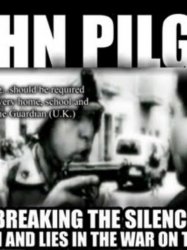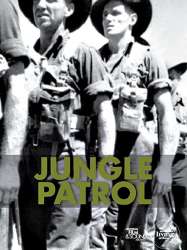Meeting Resistance is a american film of genre Documentary released in USA on 1 april 2007
Meeting Resistance (2007)

If you like this film, let us know!
- Infos
- Casting
- Technical infos
- Photos
- Videos
- Film quotes
- Characters
- Music
- Awards
Meeting Resistance is a 2007 documentary film about the Iraq War. The film presents the views of eleven Iraqi resistance fighters in the Adhamiyah neighborhood of Baghdad. The film was directed by journalists Molly Bingham (USA) and Steve Connors (UK).
The interviewees are all anonymous and (with one exception) faceless or out-of-focus on camera. They are presented as nicknames: The Teacher, The Warrior, The Traveler, The Imam, The Wife, The Syrian, The Fugitive, The Local, The Republican Guard, The Lieutenant, and The Professor.
The US military currently organizes showings for its forces in Iraq so they can know who they are fighting.
Comments
Leave comment :
Suggestions of similar film to Meeting Resistance
There are 8969 with the same cinematographic genres, 8197 films with the same themes (including 867 films with the same 3 themes than Meeting Resistance), to have finally 70 suggestions of similar films.If you liked Meeting Resistance, you will probably like those similar films :
 , 1h41
, 1h41Origin United-kingdom
Genres War, Documentary
Themes Documentary films about war, Documentary films about historical events, Political films
Rating80%





This is the inside story of what happens to a company of American soldiers - ninety-two air assault troopers from the 3rd Brigade, 101st Airborne Division (Rakkasans) - who are sent to fight, suffer and try to survive a full year's tour of duty in Iraq. From the final stages of their training and farewells at Fort Campbell, Kentucky, through their deployment to Baghdad, Samarra and Tikrit, and then the return home to their loved ones, this is a searching examination of the combat, the life and death struggles, and the profound changes in the lives of these professional soldiers who set out with hope and confidence of making a difference in Iraq.

Son of al Qaeda (2004)
Origin Canada
Genres Documentary
Themes Films about terrorism, Documentary films about law, Documentary films about war, Documentary films about historical events, Documentaire sur une personnalité, Documentary films about politics, Documentary films about terrorism, Political films
Rating26%






Vietnam: The Last Battle (1995)
, 51minutesGenres Documentary
Themes Documentary films about war, Documentary films about historical events, Political films
Actors John Pilger
Pilger introduces the film, on the 20th anniversary of the end of the conflict, from the roof of the U.S. Embassy, Saigon, where the last American troops had departed by helicopter. Veteran Bobby Muller, interviewed on China Beach, calls the war a lie and talks about his own belief of this soon after his landing there in 1965. Pilger states that Ho Chi Minh had quoted from the U.S. Declaration of Independence and sought support from Washington for his nation’s independence. An elderly woman, who lost of her husband and five children fighting the French and the Americans, is shown as an exemplar of the struggle for independence. Coal miner Pham Ngo Duc describes the massive American bombing, which, according to Pilger, journalists James Cameron and Harrison Salisbury, were vilified for reporting. Pilger recounts the final evacuation of the U.S. Embassy and what he deems as the "peaceful" arrival of the North Vietnamese, which ended the war.
 , 52minutes
, 52minutesDirected by John Pilger
Genres Documentary
Themes Documentary films about war, Documentary films about historical events, Political films
Actors John Pilger
Rating78%





The documentary attempts to contrast the proclaimed aims of the War on Terror with, what Pilger sees, as the humanitarian failures in countries such as Afghanistan and Iraq. It asserts that the Afghan mujahideen and Afghan Arabs including Osama bin Laden, from which later both the Taliban and Al Qaeda were created, received support from the United States and by Britain's MI6. Pilger alleges that President Jimmy Carter authorised a five-hundred million dollar programme to help set up the native Afghan mujahideen, starting as early as six months prior to the Soviet invasion into Afghanistan.

Battlefield (TV series) (1993)
Origin USA
Genres Documentary
Themes Documentary films about war, Documentary films about historical events, Political films
Rating86%






Nuba Conversations (2000)
, 56minutesOrigin United-kingdom
Genres Documentary
Themes Films set in Africa, Films about religion, Films about terrorism, Documentary films about law, Documentary films about war, Documentary films about historical events, Documentary films about politics, Documentary films about religion, Documentary films about terrorism, Political films, Films about Islam
Ten years after shooting Kafi's Story British filmmaker Arthur Howes reentered in Sudan clandestinely to find out what had happened to the Nuba peoples of Torogi.

Origin USA
Genres Documentary
Themes Films about racism, Films about religion, Documentary films about racism, Documentary films about law, Documentary films about war, Documentary films about historical events, Documentaire sur une personnalité, Documentary films about religion, Political films, Films about Jews and Judaism, Documentary films about World War II
Rating66%






Jungle Patrol (1944)
, 19minutesGenres Documentary
Themes Seafaring films, Transport films, Documentary films about war, Documentary films about historical events, Political films, Documentary films about World War II
Actors Peter Finch
It starts with their initial deployment from Port Moresby on board a US plane called the Honeymoon Express, then covers their flight over the Owen Stanley Range and Kokoda Trail to an airstrip at Dampu in the Ramu Valley ten miles from the frontline. The eight troops them march through the Ramu Valley to Shaggy Ridge in the Finisterre Range – which the foreword claims was the nearest point to Tokyo reached by Allied troops. Some of the film was shot under fire. En route the patrol encounters enemy fire from a Japanese machine gun crew in a bunker and enemy sniper, which the Australians kill. Then they take part in a battle to take Shaggy Ridge.
 , 28minutes
, 28minutesOrigin USA
Genres Documentary
Themes Prison films, Films about racism, Documentary films about the visual arts, Documentary films about racism, Documentary films about law, Documentary films about war, Documentary films about historical events, Documentaire sur une personnalité, Political films, Documentary films about World War II
Rating73%





Le film est consacré à Estelle Ishigo (1899-1990), une artiste qui est allée volontairement dans un camp d'internement pour japonais lors de la Seconde Guerre mondiale.

The Ground Truth (2006)
, 1h12Origin USA
Genres War, Documentary
Themes Documentary films about war, Documentary films about historical events, Documentaire sur une personnalité, Documentary films about health care, Political films
Actors Sean Huze
Rating74%





The film addresses the issues many soldiers face upon their return from the War in Iraq, including problems with Post Traumatic Stress Disorder and an inability to meld back into "normal" society. The film includes footage of soldiers in Iraq and personal interviews with about two dozen people directly affected by the war (either veterans or family members/friends of veterans). The veterans, both men and women, speak of their experiences before, during, and after the war. The veterans speak about recruitment and training, combat, their returns home, facing their families, and their difficulties in making the necessary changes needed to fit back into society. The Ground Truth was released in theatres on September 15 of 2006 and released on DVD on September 26 of the same year. People can sign up to host screenings of the film online at The Ground Truth or view a low-resolution copy online, see bottom.
 Connection
Connection